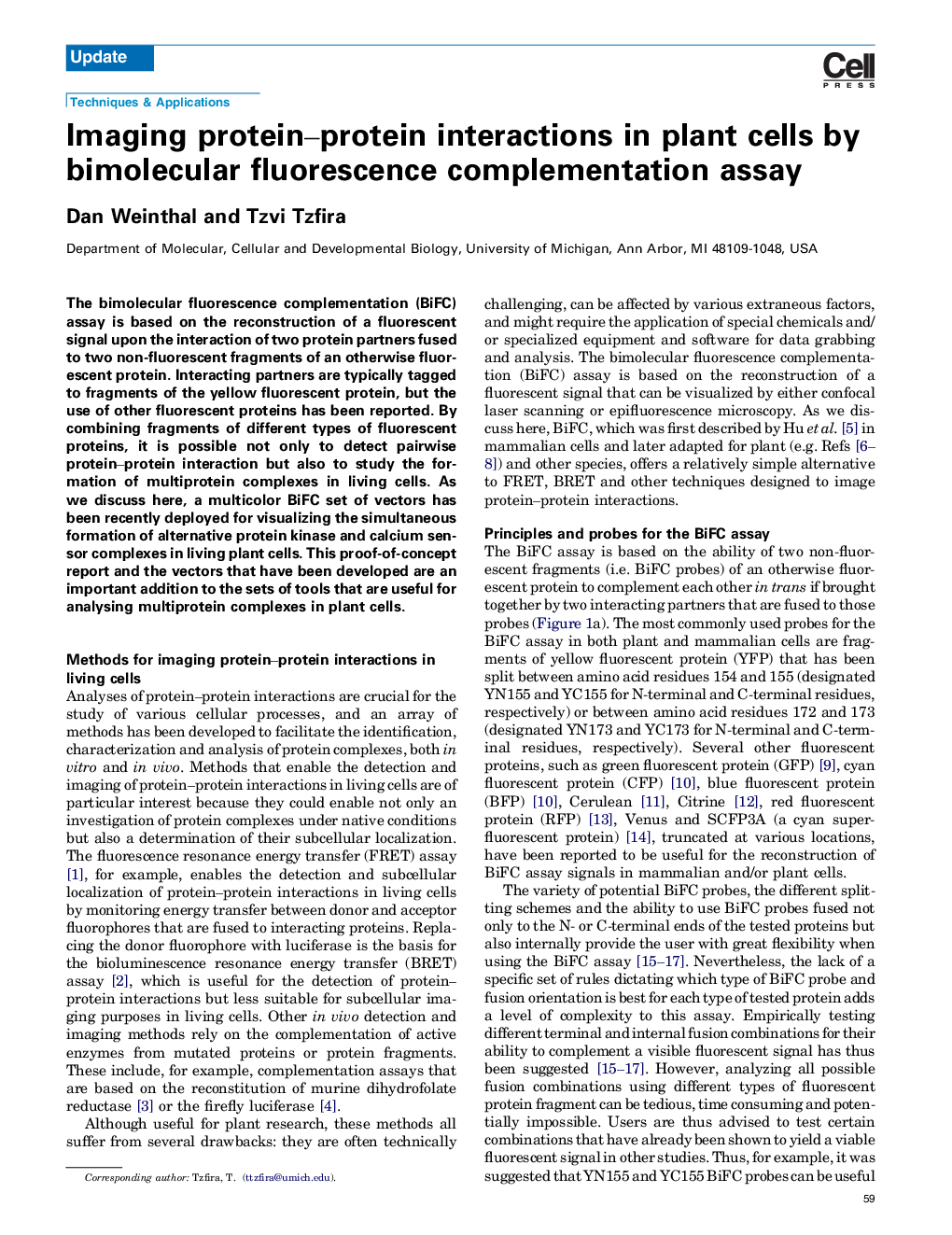| Article ID | Journal | Published Year | Pages | File Type |
|---|---|---|---|---|
| 2826351 | Trends in Plant Science | 2009 | 5 Pages |
The bimolecular fluorescence complementation (BiFC) assay is based on the reconstruction of a fluorescent signal upon the interaction of two protein partners fused to two non-fluorescent fragments of an otherwise fluorescent protein. Interacting partners are typically tagged to fragments of the yellow fluorescent protein, but the use of other fluorescent proteins has been reported. By combining fragments of different types of fluorescent proteins, it is possible not only to detect pairwise protein–protein interaction but also to study the formation of multiprotein complexes in living cells. As we discuss here, a multicolor BiFC set of vectors has been recently deployed for visualizing the simultaneous formation of alternative protein kinase and calcium sensor complexes in living plant cells. This proof-of-concept report and the vectors that have been developed are an important addition to the sets of tools that are useful for analysing multiprotein complexes in plant cells.
